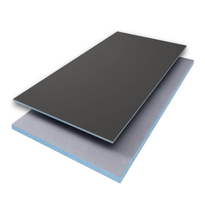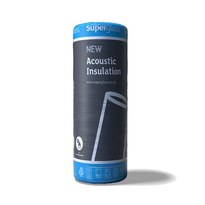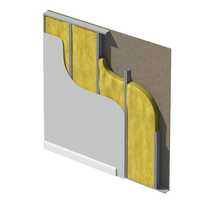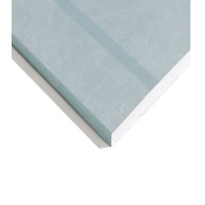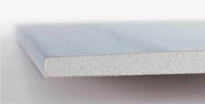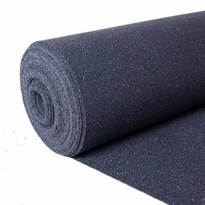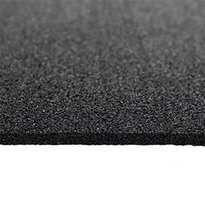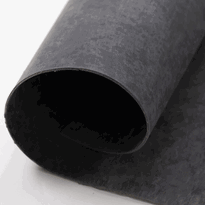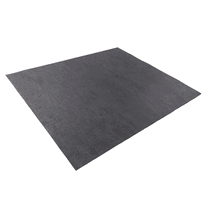Effective Use of Acoustic Underlays and Mats
To optimise sound insulation between floors, selecting and correctly installing acoustic underlays and mats tailored to the specific needs of the floor system is essential. Their effectiveness depends on factors such as material density, thickness, and compatibility with the type of flooring used.
Thicker underlays made from high-density materials offer superior sound absorption and thermal insulation. Conversely, lighter or less dense options may be inadequate for mitigating high-impact noise, which is important in residential and commercial settings alike.
Proper installation is crucial to maximise performance. This involves ensuring full coverage without gaps or overlaps, as any gaps can significantly compromise the acoustic barrier. Additionally, materials must be able to withstand load compression to prevent bottoming out under foot traffic, maintaining their soundproofing qualities over time.
Combining acoustic underlays and mats with other soundproofing methods, such as resilient layers or decoupling techniques, can improve the overall effectiveness of the acoustic performance.
When selecting products such as Iso-Step or MuteMat, it's important to assess their specifications against the specific requirements of the project. This ensures a durable and efficient solution that enhances comfort and reduces noise disturbance effectively.
Enhancing Soundproofing With Insulation and Decoupling Techniques
Enhancing soundproofing between floors involves more than selecting the right materials; it requires the implementation of specialised techniques such as insulation and decoupling to effectively interrupt sound vibration pathways. Decoupling employs resilient materials like rubber or acoustic mats to isolate floor layers, significantly reducing impact noise such as footsteps or slamming. Properly chosen materials—mass-loaded vinyl, Green Glue, or acoustic sleepers—absorb and dampen vibrations, thereby increasing the overall soundproofing performance. It is crucial that these methods are compatible with the structural support to prevent issues such as resonance effects, including the triple leaf effect. Incorrect installation can compromise the effectiveness of these solutions, making professional guidance essential. Proper installation ensures maximum effectiveness. Feel the reassurance of a quieter home, where your space becomes an oasis of tranquillity. Enjoy the confidence that comes with effective solutions tailored precisely for your needs. Experience a sense of belonging in a peaceful and comfortable living environment.
Flooring Options That Reduce Noise Transmission
Different flooring options vary significantly in their ability to reduce noise transmission between levels. Selecting the appropriate material depends on specific acoustic performance requirements and environmental considerations.
Carpet flooring effectively absorbs sound waves and reduces airborne noise such as voices and music. Its impact noise mitigation is commonly measured by Impact Insulation Class (IIC) ratings, which typically range from 35 to 50. The soft fibres of carpet dampen sounds from footsteps and furniture movement, making it suitable for environments where acoustic comfort is a priority. Carpet with a higher pile height or dense fibers can further increase sound absorption, improving noise mitigation.
Vinyl flooring, especially thicker types or engineered versions with soundproofing features, offers excellent noise reduction among hard surface options. This can be further improved by adding acoustic underlayments, enhancing its ability to minimise impact and airborne noise.
Rubber flooring provides superior impact noise absorption due to its flexibility, making it ideal for high-impact environments such as gyms and industrial spaces. Its natural resilience helps to diminish sound transmission effectively.
Engineered hardwood and laminate flooring can also contribute to sound insulation when installed with appropriate underlayments and correct installation techniques. These options can be tailored to balance durability and acoustic performance, ensuring quieter environments in residential and commercial settings.
Optimal Underlayment Choices for Sound Absorption
Selecting the appropriate underlayment for sound absorption requires careful consideration of several key factors, including the type of flooring, the desired level of noise reduction, budget constraints, and environmental impact. Soundproofing is a complex process that benefits from tailored solutions based on specific needs, ensuring optimal acoustic comfort. Rubber underlayment, particularly recycled rubber, offers high effectiveness in insulating against impact and airborne noise, making it a popular choice for a variety of flooring types such as laminate, hardwood, and engineered wood. Its durability and acoustic properties help create a quieter living or working environment. Cork underlayment is an eco-friendly option that excels at reducing impact noise. Made from renewable bark, cork is naturally sustainable and provides additional benefits such as thermal insulation. However, it may be less effective than rubber for airborne sound insulation, so it's ideal for spaces prioritising impact noise reduction and environmentally conscious choices. Foam underlayments are among the most affordable options and are effective at dampening impact noise. They're suitable for lighter flooring types and can help improve comfort underfoot. Nevertheless, they tend to be less effective against airborne noise compared to rubber and cork, making them a practical but limited solution for comprehensive soundproofing. For those seeking a comprehensive approach, products like MuteMat 3 combine layered materials to deliver enhanced noise reduction, addressing both impact and airborne sound issues. - Feel confident in selecting an underlayment that not only meets your acoustic needs but also aligns with your environmental values. - Enhance your living space with flooring solutions that prioritise comfort and high performance. - Create a truly quiet and harmonious home environment where everyone feels a sense of belonging.
Installation Strategies to Maximise Sound Insulation
Maximising sound insulation between floors requires meticulous attention to installation methods that effectively decouple the floor assembly from the underlying structure and minimise sound transmission pathways. Proper subfloor preparation involves ensuring a level, clean surface before applying the chosen underlayment, which can help improve sound absorption. Sealing all gaps with acoustic sealant and maintaining expansion joints around walls and fixtures prevent sound leaks that can compromise insulation effectiveness. Techniques such as floating floor systems with suitable underlayments and the use of dense materials like mass loaded vinyl are especially beneficial for enhancing sound blocking qualities. For optimal decoupling, installers may implement Iso-Step systems or plywood raft constructions, which act to disrupt sound pathways. Additionally, incorporating resilient channels and applying dampening compounds such as Green Glue can further reduce vibrations transmitted through the structure. When these methods are combined carefully, they form an effective sound barrier, creating quieter, more comfortable spaces.
Conclusion
Sound insulation between floors necessitates careful selection of effective underlays, the utilisation of insulation and decoupling techniques, and the choice of suitable flooring materials. Proper installation strategies, including ensuring full coverage and secure placement, are vital to optimise noise reduction. By adopting a structured approach that combines these methods, individuals in the UK can substantially minimise sound transmission, resulting in quieter and more comfortable indoor environments. Precision during installation and thorough implementation are essential to achieving optimal acoustic performance between floors.


